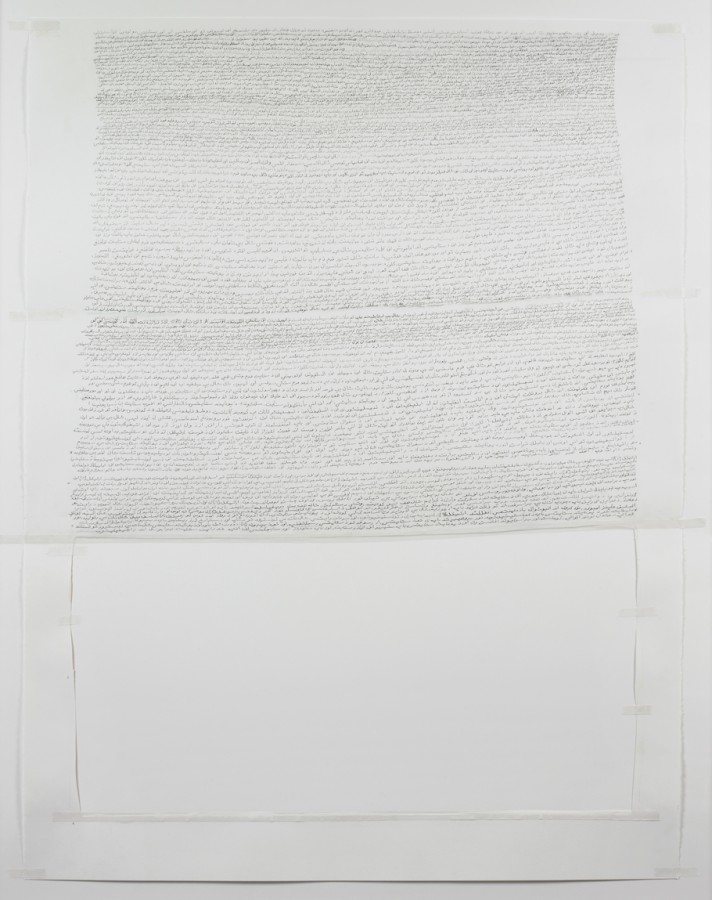
I frequently go through times when I commit to writing every day for an entirely different reason: for delight, for curiosity to see what emerges from my mind via my fingertips on a keyboard or my right hand sliding a pen or pencil across a page. This writing is an adventure into myself, the same as creating a drawing. I know where I am and know which road I am taking but I don’t know where I’ll end up: just enough structure and just enough serendipity. The results of these periodic commitments are rich once I sort through the pages, keeping what I can expand into a bigger piece of writing, and leaving the rest. The end result is significant.
The second type of writing is a creative ritual with an artistic goal, whereas the first type of writing I mention is more connected to employing worry beads, a mala, or a rosary. The physicality of the act is key. The meaning is in the process not in the product.
Elena del Rivero’s Letters explore this ongoing ritual of extracting and purging, the results of which are often obscured or beautifully obliterated: the act of writing as compulsion. In a different way, Annabel Daou’s Constitution plays with a process of recording language in which meaning breaks down but the process of writing and recording develops its own poetic presence, with meanings sprouting out in a multiplicity of confused directions. In both, the act is key, but the visual evidence of the act is lyrical.
When is the act of writing a meditation that produces meaning? And when can the point of writing be the ritual itself?
Susanna Harwood Rubin (b. New Jersey) has held artist residencies at the OMI International Arts Center in Ghent, New York (1998) and the American Academy, Rome (2002). Recent solo exhibitions have been held at the Hofstra University Museum, Hempstead, New York (2000); De Chiara/Stewart Gallery, New York (2000); Addison Gallery of American Art, New York (2003); artMovingProjects, New York (2006); Matin, Los Angeles (2007); and Museo de Arte Contemporáneo Esteban Vicente, Segovia, Spain (2009). Harwood Rubin has participated in many group exhibitions, including shows associated with the Sally & Wynn Kramarsky Collection, New York. She lives and works in New York. More information about her work can be found at www.susannaharwoodrubin.com.